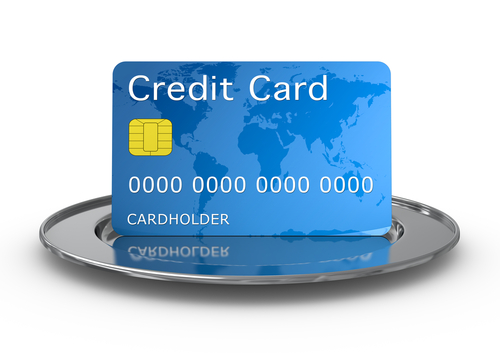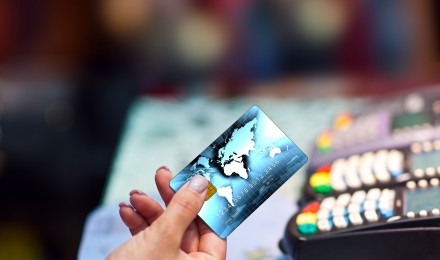Look inside anyone’s wallet today and you’ll probably find one or two credit cards. In fact, many working adults have at least one credit card in their name. Credit cards are rectangular plastic cards that serve a valuable purpose in today’s society. They come in handy when you’re short on cash; and if you want to build your credit history, getting your first credit card is a good start. But while many people use and benefit from credit, few people know what is a credit card.
What is a Credit Card?
Credit cards are an alternative to cash and are issued by financial institutions and banks. After submitting an application and being approved for credit, the bank or institution issues a credit line, which is basically an amount that you’re able to access. Credit cards are best compared to loans, but without the actual cash. Each credit card has a magnetic strip on the back that keeps track of your purchases. You can swipe your card at locations that accept credit cards to pay for purchases. Each swipe reduces your available credit and adds to your debt. For example, if your bank issues a $2,000 credit line and you charge $1,500 on the credit card, your available credit drops to $500. You then owe your credit card company $1,500 which you can pay off over time with small minimum payments — typically 2% to 3% of the balance.
Credit Cards and Interest Rates
Acquiring a line of credit with a bank or financial institution isn’t without costs. Several types of fees are associated with credit cards, and these fees vary depending on the credit card company and the type of credit card. Common fees include annual fees, maintenance fees and interest. Some credit cards feature 0% interest for a specified period. But on average, credit cards have interest rates as high as 20% or 30%. The amount paid in interest depends on your balance. The longer you carry a balance, the more money you pay in interest. But there are ways to avoid high interest charges. For example, you can pay off your credit card balance in full each month to avoid interest charges, or pay off the balance within two to three months to keep interest charges to a minimum. To alleviate high debt, you should view credit cards as a short-term loan and only use your account if you’re able to repay the debt fast.
Types of Credit Cards
There are two types of credit cards: secured credit cards and unsecured credit cards. Secured credit cards are issued by many banks and they’re perfect for establishing credit or rebuilding credit. These types of credit cards do not require a good credit history. However, you need a steady source of income and a savings account with the bank to qualify. You must also complete an application and pay a security deposit to acquire a secured credit card. Your credit line on the secured card matches your deposit. For example, if you make a $1,000 deposit on your account, you can expect a $1,000 credit line.
Unsecured credit cards are similar to secured credit cards. However, these accounts do not require a deposit or collateral. For this reason, you need an excellent credit history to qualify for such credit cards. The bank or financial institution approves you for a credit line based on your credit score and monthly income. However, credit lines aren’t written in stone and banks can increase or decrease your credit line depending on your spending and payment habits.
While the variety of credit cards can seem endless, what is a credit card is universal to each and every one whether it’s plain vanilla or has all the bells and whistles.
But while many people use and benefit from credit, few people know what is a credit card.
Look inside anyone’s wallet today and you’ll probably find one or two credit cards. In fact, many working adults have at least one credit card in their name. Credit cards are rectangular plastic cards that serve a valuable purpose in today’s society. They come in handy when you’re short on cash; and if you want to build your credit history, getting your first credit card is a good start. But while many people use and benefit from credit, few people know what is a credit card.
What is a Credit Card?
Credit cards are an alternative to cash and are issued by financial institutions and banks. After submitting an application and being approved for credit, the bank or institution issues a credit line, which is basically an amount that you’re able to access. Credit cards are best compared to loans, but without the actual cash. Each credit card has a magnetic strip on the back that keeps track of your purchases. You can swipe your card at locations that accept credit cards to pay for purchases. Each swipe reduces your available credit and adds to your debt. For example, if your bank issues a $2,000 credit line and you charge $1,500 on the credit card, your available credit drops to $500. You then owe your credit card company $1,500 which you can pay off over time with small minimum payments — typically 2% to 3% of the balance.
Credit Cards and Interest Rates
Acquiring a line of credit with a bank or financial institution isn’t without costs. Several types of fees are associated with credit cards, and these fees vary depending on the credit card company and the type of credit card. Common fees include annual fees, maintenance fees and interest. Some credit cards feature 0% interest for a specified period. But on average, credit cards have interest rates as high as 20% or 30%. The amount paid in interest depends on your balance. The longer you carry a balance, the more money you pay in interest. But there are ways to avoid high interest charges. For example, you can pay off your credit card balance in full each month to avoid interest charges, or pay off the balance within two to three months to keep interest charges to a minimum. To alleviate high debt, you should view credit cards as a short-term loan and only use your account if you’re able to repay the debt fast.
Types of Credit Cards
There are two types of credit cards: secured credit cards and unsecured credit cards. Secured credit cards are issued by many banks and they’re perfect for establishing credit or rebuilding credit. These types of credit cards do not require a good credit history. However, you need a steady source of income and a savings account with the bank to qualify. You must also complete an application and pay a security deposit to acquire a secured credit card. Your credit line on the secured card matches your deposit. For example, if you make a $1,000 deposit on your account, you can expect a $1,000 credit line.
Unsecured credit cards are similar to secured credit cards. However, these accounts do not require a deposit or collateral. For this reason, you need an excellent credit history to qualify for such credit cards. The bank or financial institution approves you for a credit line based on your credit score and monthly income. However, credit lines aren’t written in stone and banks can increase or decrease your credit line depending on your spending and payment habits.
While the variety of credit cards can seem endless, what is a credit card is universal to each and every one whether it’s plain vanilla or has all the bells and whistles.
But while many people use and benefit from credit, few people know what is a credit card.







